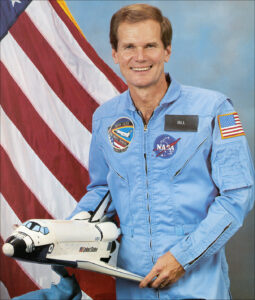Senator Bill Nelson (D-Florida)
Sec.201 (b) UNITED STATES HUMAN SPACE FLIGHT CAPABILITIES.—Congress reaffirms the policy stated in section 501(a) of the National Aeronautics and Space Administration Authorization Act of 2005 (42 U.S.C. 16761(a)), that the United States shall maintain an uninterrupted capability for human space flight and operations in low-Earth orbit, and beyond, as an essential instrument of national security and of the capacity to ensure continued United States participation and leadership in the exploration and utilization of space.
Sec.202 (b) KEY OBJECTIVES.—The key objectives of the United States for human expansion into space shall be—
(1) to sustain the capability for long-duration presence in low-Earth orbit, initially through continuation of the ISS and full utilization of the United States segment of the ISS as a National Laboratory, and through assisting and enabling an expanded commercial presence in, and access to, low-Earth orbit, as elements of a low-Earth orbit infrastructure;
Sec.202 (b)(2) to determine if humans can live in an extended manner in space with decreasing reliance on Earth, starting with utilization of low-Earth orbit infrastructure, to identify potential roles that space resources such as energy and materials may play, TO MEET NATIONAL AND GLOBAL NEEDS AND CHALLENGES, SUCH AS POTENTIAL CATACLYSMIC THREATS, and to explore the viability of and lay the foundation for sustainable economic activities in space;
SEC. 302. SPACE LAUNCH SYSTEM AS FOLLOW-ON LAUNCH VEHICLE TO THE SPACE SHUTTLE.
Sec.302(a) UNITED STATES POLICY.—It is the policy of the United States that NASA develop a Space Launch System as a follow-on to the Space Shuttle that can access cis lunar space and the regions of space beyond low-Earth orbit in order to enable the United States to participate in global efforts to access and develop this increasingly strategic region.
Sec.302(c) MINIMUM CAPABILITY REQUIREMENTS
Sec.302(c)(1)(A) The initial capability of the core elements, without an upper stage, of lifting payloads weighing between 70 tons and 100 tons into low-Earth orbit in preparation for transit for missions beyond low-Earth orbit.


